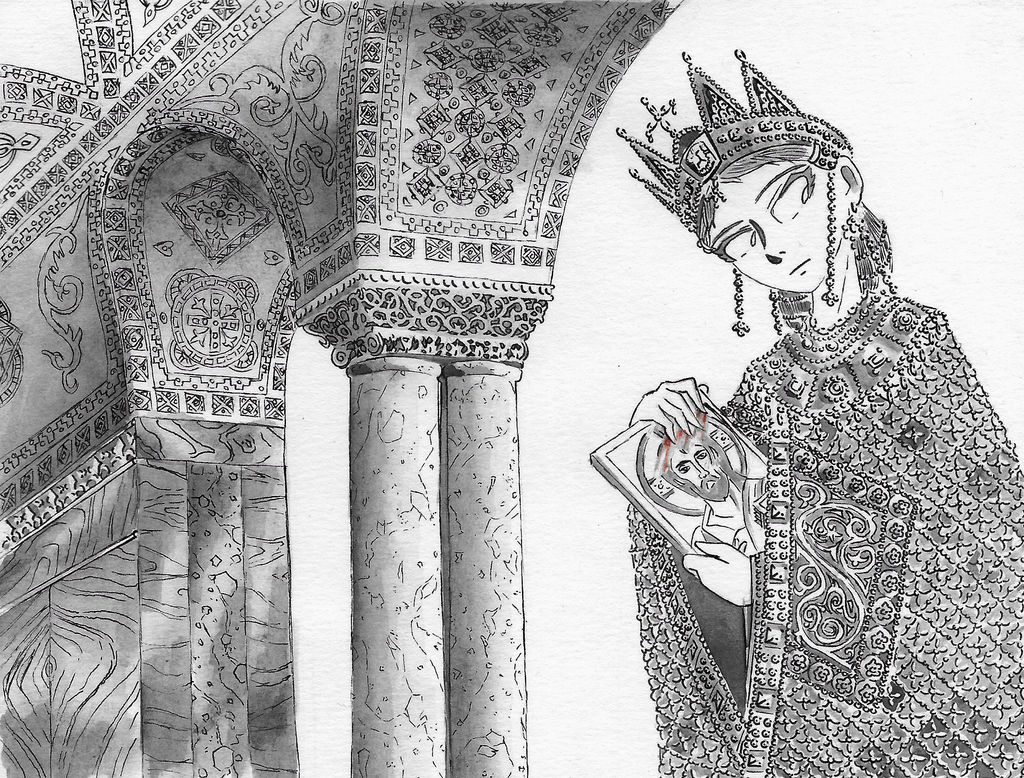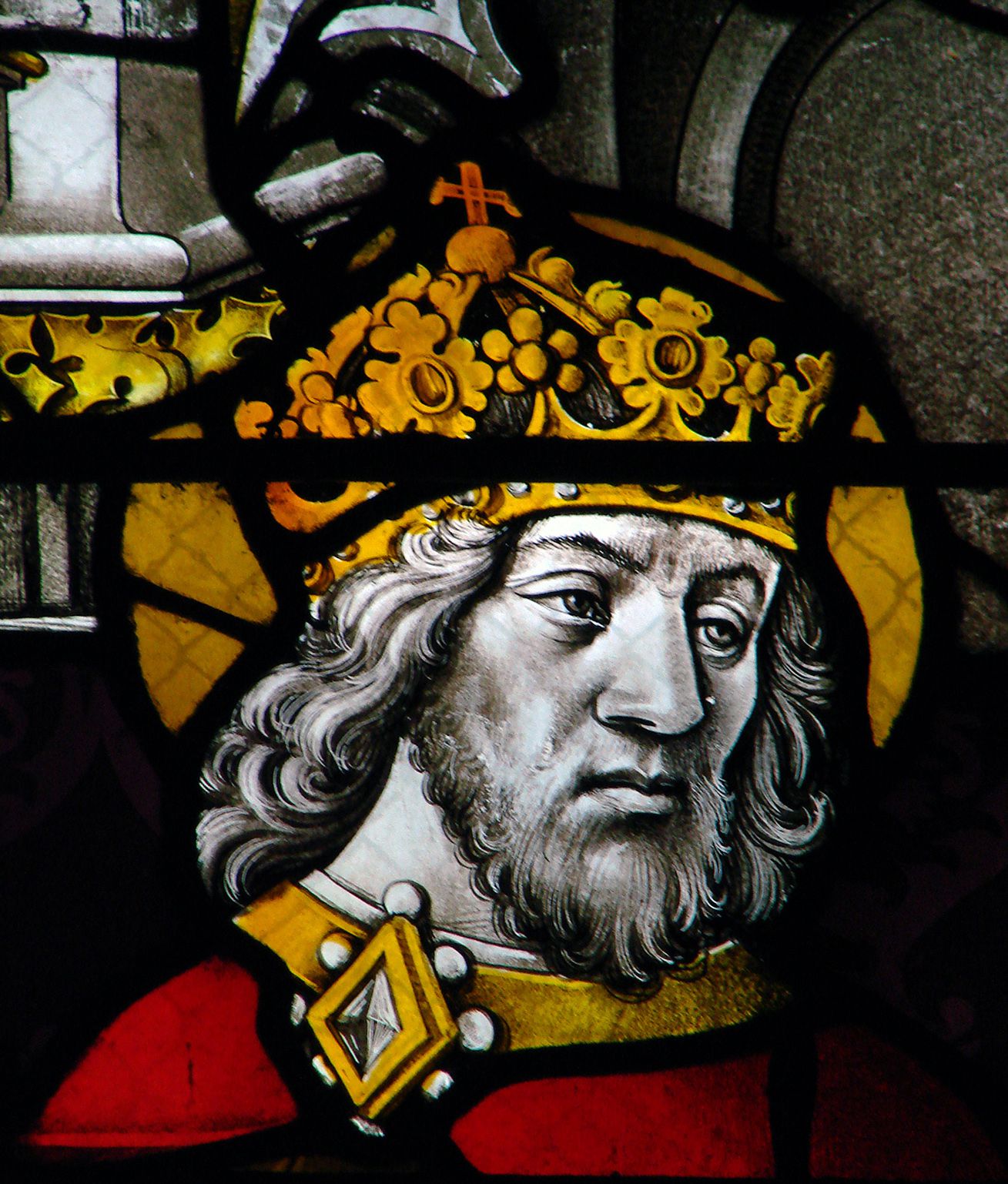The famous MYTH mentions that… Charles, also known as Charlemagne, the King of the Franks, was the first Roman Emperor after the putative fall of Roman Empire in 476 AC.
On 25th December of 800 and in Saint Peter’s Basilica, Pope Leo III crowned the son of Pepin the Short, King Charles of the Franks, Emperor, by granting him the title “King of the Romans”, a title which rightly belonged by tradition to the Roman Emperors residing in Constantinople. Leo wishing to excuse this unprecedented action for the historical standarts of Christendom, claimed that the imperial throne of Constantinople was vacant, a fact which was not true at all.

At the city of Constantine the Great since 797 ruled the Empress Irene of Athens (775-802), a woman famous for the restoration of Icons and her mortal blow against the movement of Iconoclasm, which had tormented the Eastern Christianity for almost one century. Irene had sidelined her son Constantine VI (780-797) asking to be a de facto sole Empress regnant and not the Empress regent she was before. She was the first woman to govern the Roman Empire as sole monarch and not as another regent or coimperatrix of a male monarch. Pope Leo III supported that a woman was incapable to assume sovereign powers.
But why the accusations of Papacy against Irene were a mere propaganda without any base?
The Roman Empire was governed by Roman Law, this particular legal system didn’t prohibit a woman from assuming emperorship, those restrictions only applied to the Frankish Kingdom which was under the influence of the close-minded Salic Law. The eastern Romans had no connection with this rather tribal law system that was perceived at Romaniae as “barbaric” to some extent.
The realistic reason which led Pope Leo to crown Charles Emperor was the pursuit of protection against his political enemies in the Holy See and his preservation to the Papal throne. Leo was an extremely unpleasant figure among the inhabitants of Rome, a fact which led to a massive attack against His Holiness by the angry populace at the streets of the city, a riot that eventually got him wounded.
The humbled Patriarch had to flee to the Frankish court to save his life, since he was accused by his subjects for adultery, perjury and simony. When he returned back to the city with Frankish support he defeated his political opponents, while Charles made sure he would be vindicated of all charges.

Leo also had good reasons to despise the Empress of the New Rome. The Holy See demanded that the regions of South Italy, Sicily, even Illyricum to immediately return under the spiritual authority of the Church of Rome, due to the fact that the last decades they had come under the jurisdiction of the Patriarch of Constantinople. Leo also insisted on the deposition of the Patriarch Tarasius, a personal friend of Irene, which he didnt approve. He also criticized the use of the word “Ecumenical” to the titles of the Costantinopolitan Patriarch, Empress Irene during this conflict supported her local Patriarch ignoring all those fussy claims.
As a result, the reasons which led to the coronation of Charles as Emperor were first and foremost political.

Furthermore, the Western part of the old Roman Empire had been destroyed since 476 AC, consequently for more than three centuries Western Europe had no Roman Emperors from whom Charles could inherit succession rights, in contrast with Irene who was in the saddle of the Roman state, following a constant succession from the times of Octavius Augustus, the first Roman Emperor (27 BC – 19 AD).
Pope based his right to ordain Emperors on the famous Donation of Constantine, a successful fairytale constructed by Papacy during the Middle Ages to impose its primacy under the Churches of the East. According to this deception, when Constantine the Great left Rome, he abandoned his Imperial authority to the hands of the son of Saint Peter, granting the Pope the right to make Emperors rise and fall. During Renaissance it was discovered that the Donation of Constantine never happened. Hence Charles’ coronation as sole Roman Emperor had no legal basis.

Actually even the Carolingian King refrained from using the title “King of the Romans” and kept proclaiming himself until his dying days as King of the Franks and the Lombard’s (Rex Francorum et Langobardorum).
Charles, in order to secure recognition of his status as Emperor send after his coronation a delegation to Constantinople -the only legitimizing force in Christendom- proposing a marriage alliance to Irene so West and East will be reunited again into one. Irene was positive to this utopic suggestion; she was hoping that Charles would ensure her political survival against her enemies inside the eastern Roman Empire; however the Roman court so to stop this dangerous union deposed Irene from the throne of the Emperor. The imperial crown was received by Emperor Nikephoros who firmly denied the requests of Charlemagne for recognition of his title as Emperor of the Romans.

Charles who had already violently attacked and annexed eastern Roman territories in Italy, was for the Byzantines nothing more than an uneducated barbarian, a common usurper. The marriage proposal was seen as a great insult in the Queen City. Indeed, the King of the Franks knew how to read; on the other hand as he himself admitted he was incapable to write his own name. Perhaps that’s why the medieval Romans reacted to Charles coronation with a sense of humor. According to the historian Theophanes, the Pope was completely ignorant of proper ceremonial procedures because he anointed Charles «from head to toe».

Back to Basilissa Irene: she followed faithfully all the traditions of a classic Roman Emperor: she minted golden coins with her effigy, as every Emperor worth his salt would. In those coins she’s dressed with the embroidered imperial clothes that Roman Emperors traditionally wore. She proudly holds the imperial regalia: the cross and the orb which is a symbol for the Imperial universal authority.

Charles was at the best case another Emperor of the medieval Christian world, nevertheless under no circumstances the one, singular and timeless Roman Emperor, a title which rightfully belonged to Justinian, to Heraclius, to Irene, reaching until the death of the last Roman Emperor, the legendary Constantine XI Palaeologos. The title faded at 1453 with the Fall of Constantinople to the Ottomans, and the Roman Empire with it.


Σχολιάστε